Top 10 Least-Visited Places in India Makes You Surprised
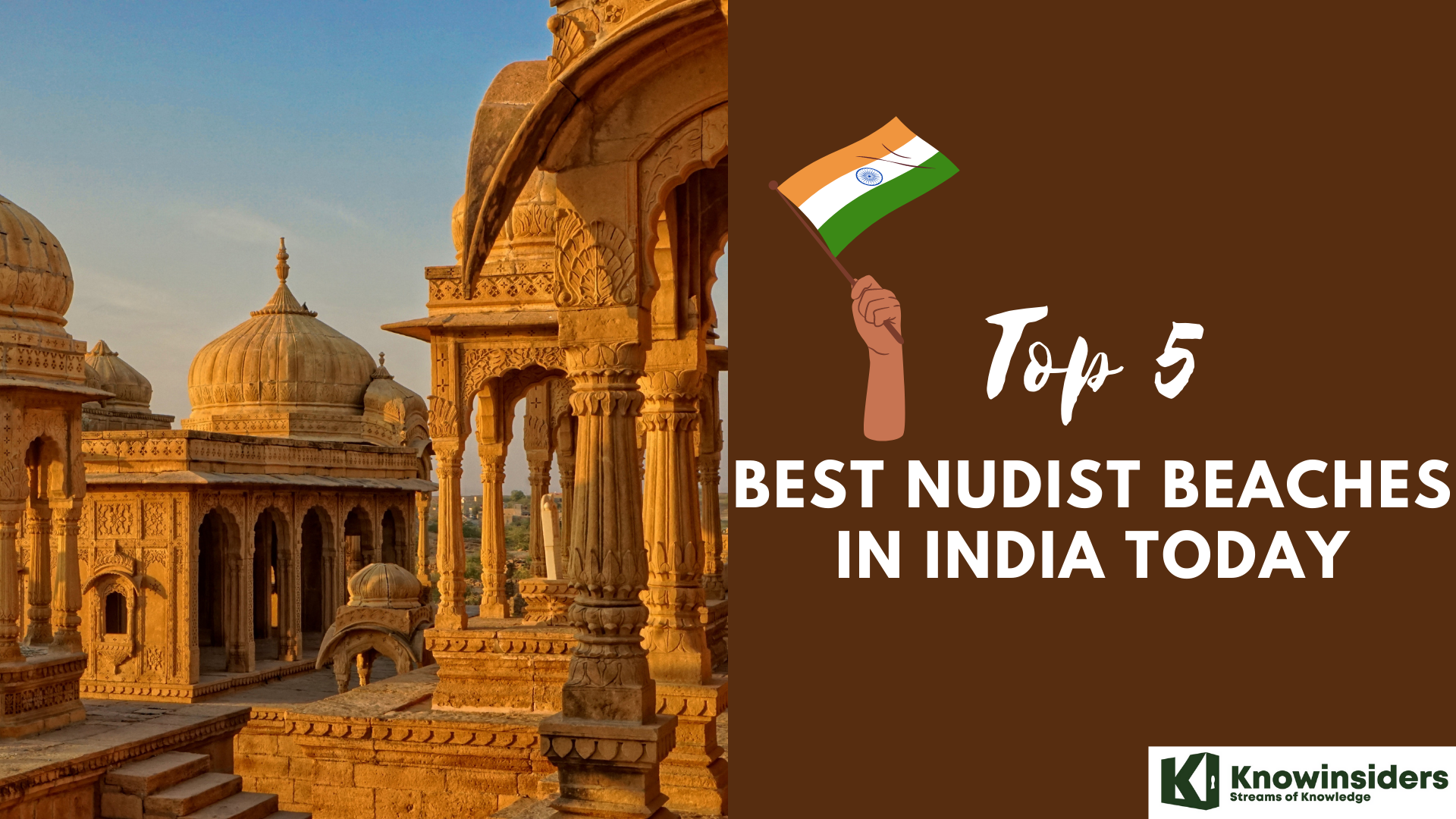 Top 5 Best Nude Beaches in India Where You Can Embrace Body Top 5 Best Nude Beaches in India Where You Can Embrace Body |
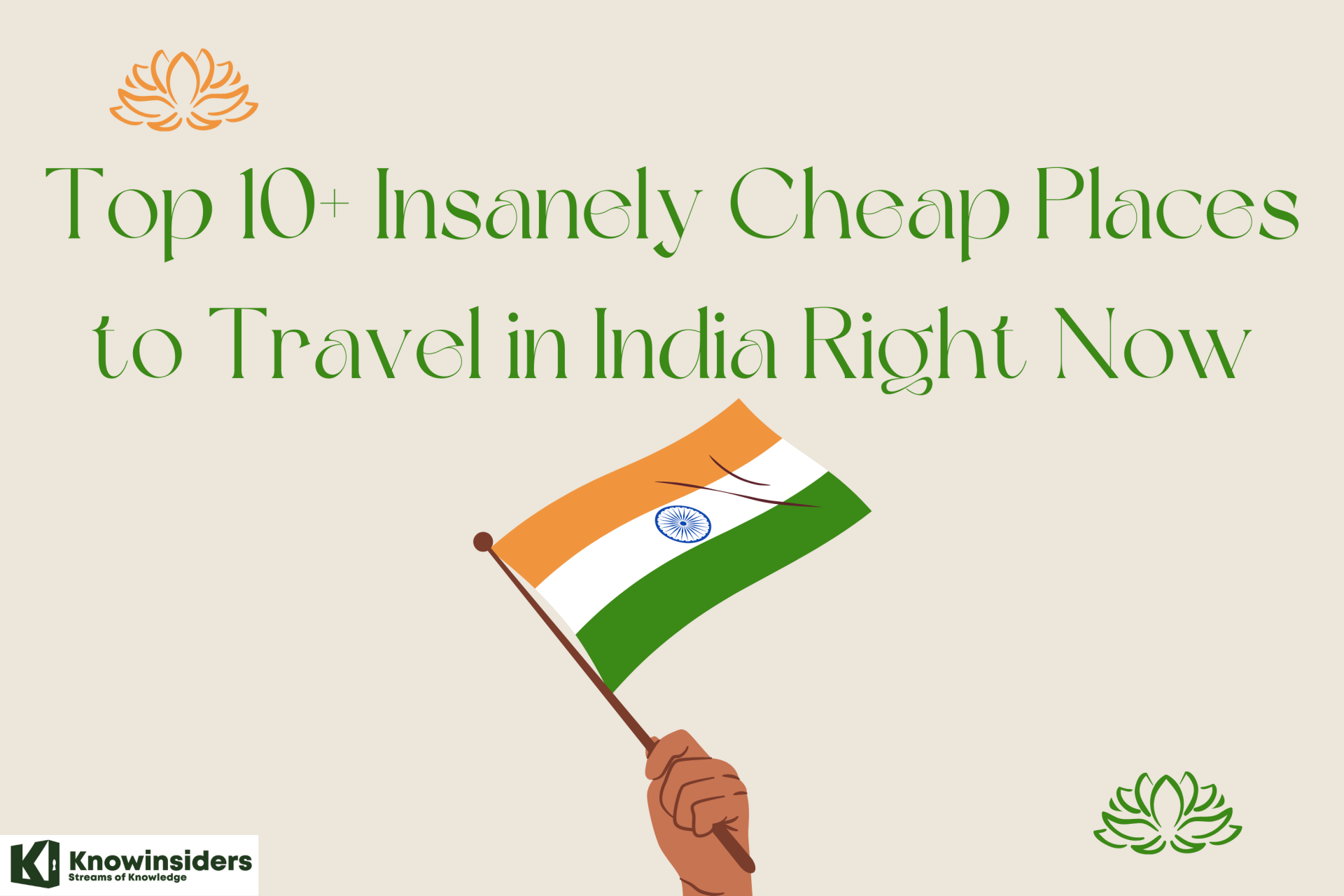 Top 10 Insanely Cheapest Places to Travel in India Today Top 10 Insanely Cheapest Places to Travel in India Today |
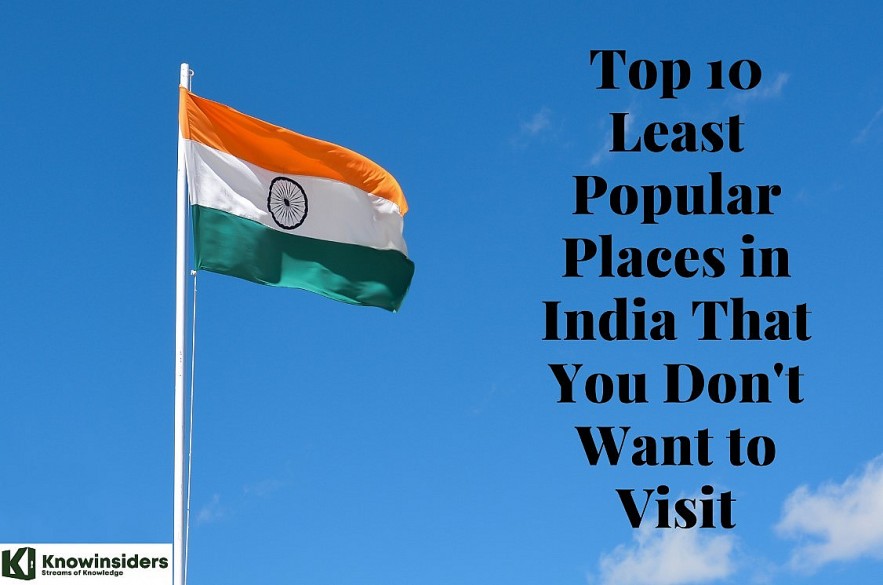 |
| Top 10 Least Popular Places in India |
| Contents |
As everyone knows, India is a popular tourist destination because of its abundance of historical sites and natural beauty. But did you know that it also features some of the most unusual tourist destinations in the world?
India is more than just the name of a country; it is also a melting pot of diverse and fascinating cultural practices and customs, rich historical heritage, and warm and welcoming people. India, home to one of the world's earliest civilizations, has never failed to capture the attention of its neighbors. In its early history, it played a significant role in the spice and merchandise trade. One of the world's fastest-growing economies is located in what was once thought of as the home of snake charmers and yogis.
India is a land of many different cultures, peoples, traditions, and religions due to the country's long history. On the other hand, the complexity of the land's history makes it impossible to decipher all of its mysteries. People who are planning trips to India often look for these hidden treasures among the country's most popular attractions.
Whether your motivation for seeking out India's most mysterious locations stems from a hunger for adventure or simple curiosity, you will not be let down. India is full of wonders that will leave you in awe, from haunted sites to locations that defy logic and science.
KnowInsiders bring to you 10 least visited places across the country which would force you to put on Sherlock's hat and search for more.
Top 10 Least Popular Places in India
(Ranked by KnowInsiders)
1. Roopkund, Uttarakhand
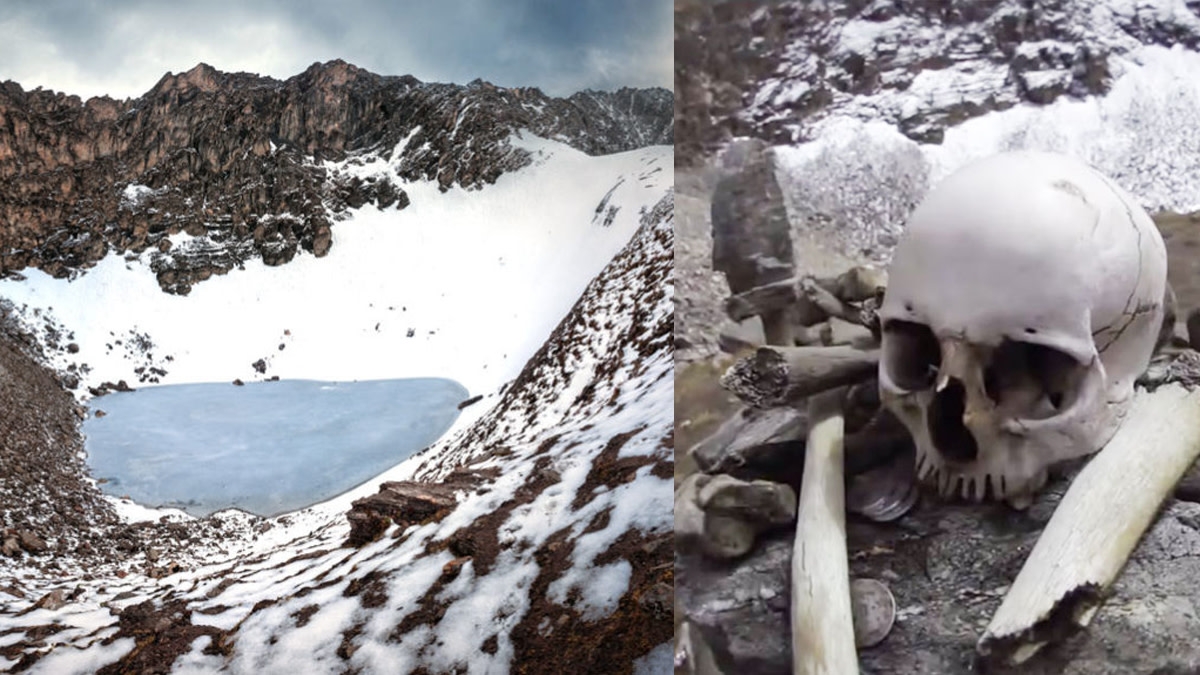 |
| Photo: wanderwisdom |
In the Indian Himalayas at a height of 5,029 meters (16,500 feet), Roopkund is a glacial lake surrounded by rocky glaciers and snow-capped mountains. The 600 to 800 human skeletons that are hidden beneath the surface are what really make this place interesting. According to legend, these are the remains of a king of Kannauj and his court who died in the ninth century. You can now see their bones when the lake melts. One of the toughest treks in India, the route there requires a trek from the Lohajang Pass through a number of villages, glacial valleys, and mountain passes.
Roopkund, a lake surrounded by gruesome remains, is one of the tallest mountains in Uttarakhand and is situated there. The skeletons and bones of many people are scattered along the lake's shores and even inside of it, visible when it is not frozen, some of which still have the flesh attached and preserved. The remains discovered at the lake have been tested for years, yielding results that just don't seem to make sense. It is considered to be a truly mysterious place to visit in India. Except for the fact that some of the bones appear to be even older, some people think these are the remains of an Indian king, his wife, and their attendants who died in a blizzard 870 years ago.
Some claim that these are Indian soldiers who attempted to besiege Tibet but were unsuccessful, while others assert that this is a mass grave for victims of an epidemic. This is one of India's most enigmatic locations, though its origins are unknown. Do not miss it.
2. Loktak Lake Manipur
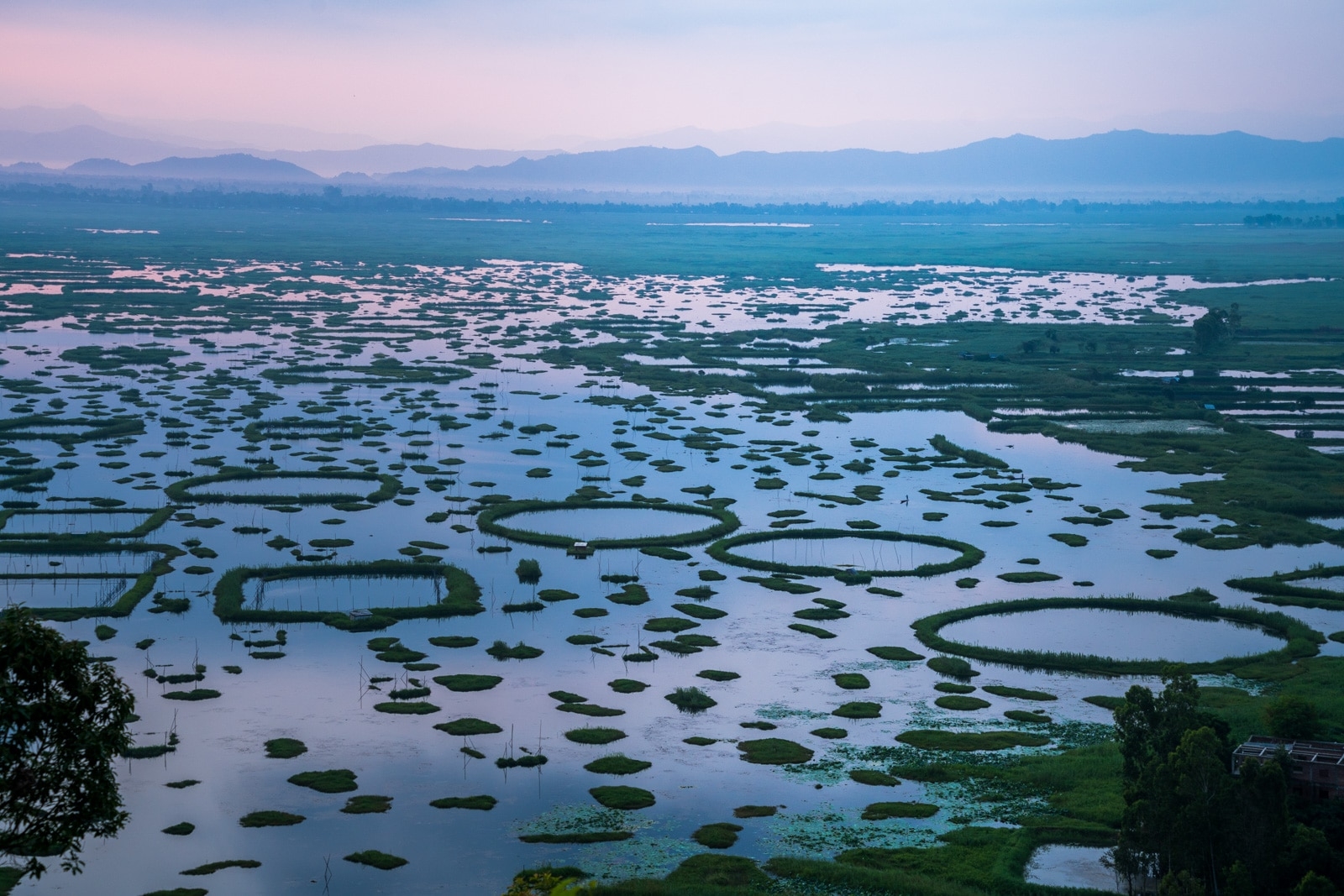 |
| Photo: lostwithpurpose |
Loktak Lake is a prime example of nature's architecture and is located in the mysterious northeastern state of Manipur. It is the largest freshwater lake in the northeast and one of India's naturally enigmatic locations. It is referred to as the "world's floating lake." The 300 square meter lake is an ecologically diverse hotspot for organic matter, vegetation, and soil and provides local residents with a means of subsistence. The designation "wetland of International importance" is also given to it. There are 5 streams in the lake's northern region. Islands make up the central region, which is also excellent for fishing. The Keibul Lamjao National Park, the only floating national park in the world, is located in the southern region and is home to nearly 424 different animal species and about 100 different bird species.
You might mistakenly believe that Loktak Lake, which is located in Manipur's Bishnupur district, is filled with tiny islands. These masses, however, are actually floating phumdis, a collection of soil, vegetation, and organic matter that can only be found on this particular body of water. In addition to sangai Manipuri deer, jungle cats, and several snakes, they serve as a habitat for the local wildlife.
3. The Land of Snakes, Maharashtra
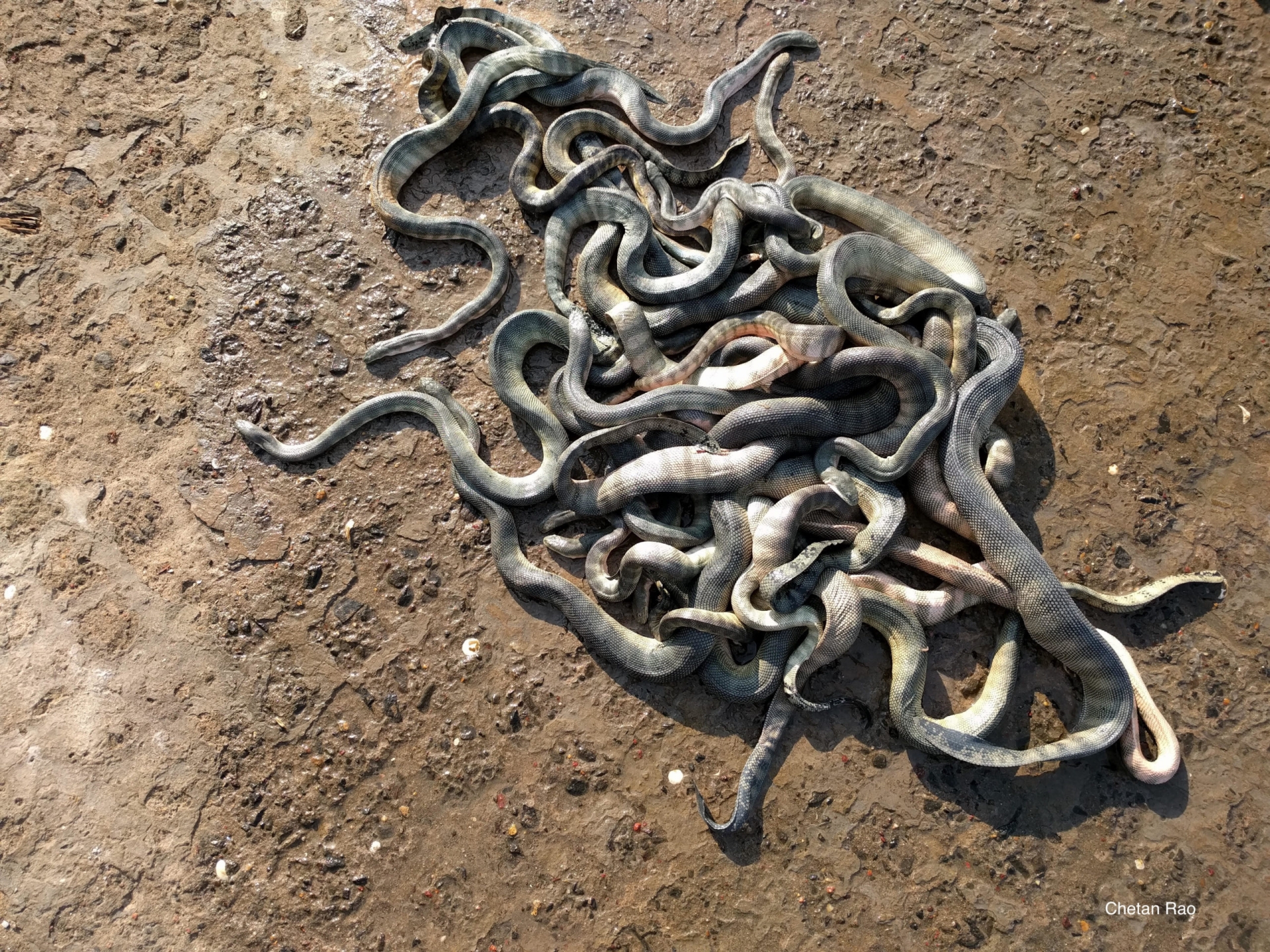 |
| Photo: mongabay |
Shetpal, also referred to as the "land of snakes," is situated in Maharashtra's Sholapur district. The cobras in this village have a place to rest in every home, and they seem to get along well with people. The fact that there has never been a case of a snake bite reported up to this point is an interesting fact. Here, cobras roam freely, and the locals worship and care for them in remembrance of Lord Shiva.
4. Living Root Bridge Meghalaya
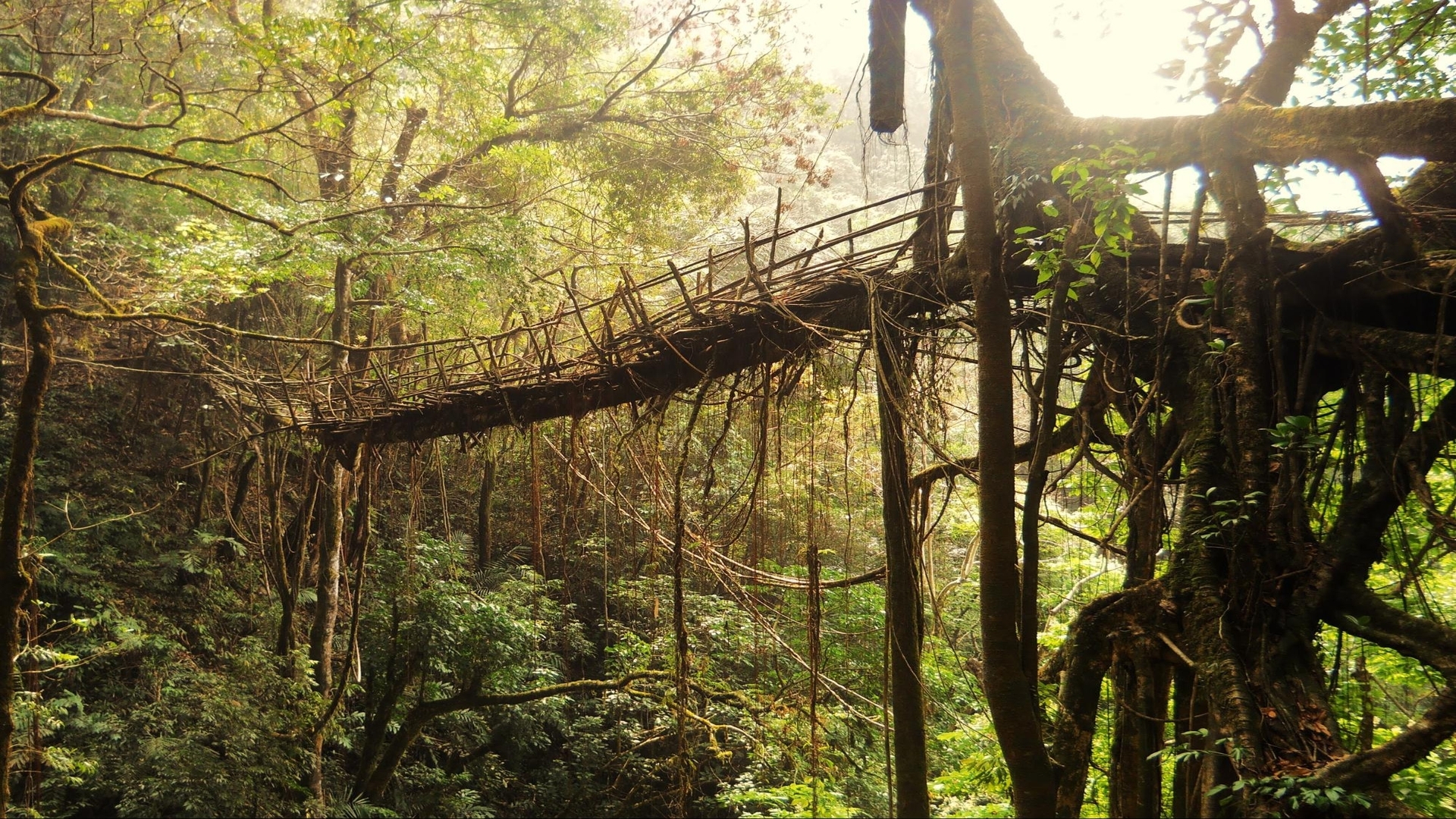 |
| Photo: researchmatters |
This is the naturally bizarre event you want to see. This bridge made of living plant roots can be found in Cherrapunji, Meghalaya, nestled in the Khasi and Jaintia hills. The bridges were naturally created by the forest's connecting and forming trees. This magnificent bridge, also known as the Umshiang Double Decker Living Root Bridge, is constructed from India Rubber Tree. The 2400-foot-high, nearly 3-kilometer-long bridge is a remarkable example of how nature can be both an engineer and an artist. One of India's most enigmatic locations is the living roots bridge.
5. Dudhsagar Falls, Goa
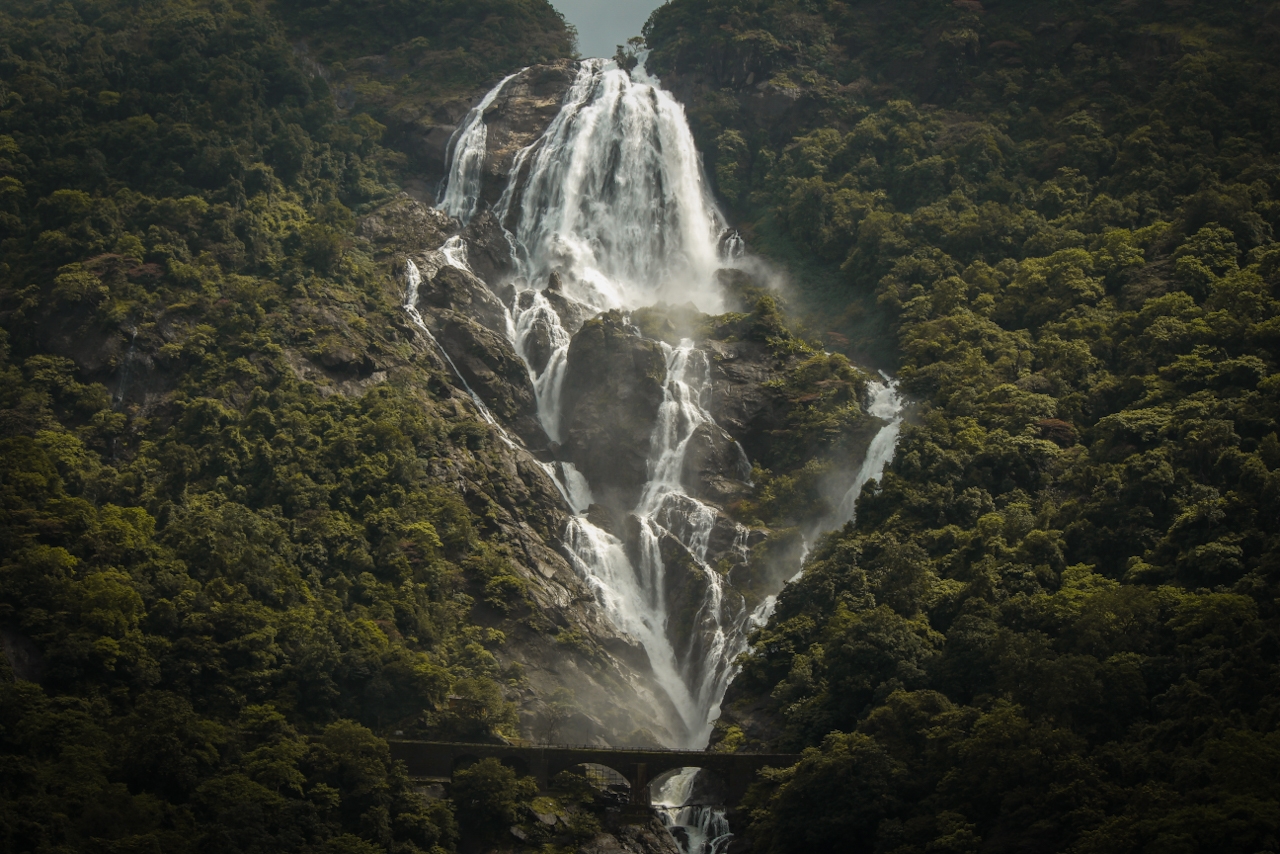 |
| Photo: world-of-waterfalls |
The magnificent Dudhsagar Falls are a well-known and picturesque attraction in Goa. It is situated in Goa's Sangeum region, about 60 kilometers from Panaji, the state's capital. Four different vertical falls make up the series of Dudhsagar Falls. Dudhsagar Falls, which have a height of 310 meters overall, originate from the lofty peaks of the Western Ghats.
'Dudhsagar' is a Konkani name that translates to 'Ocean of milk' in English. When you see this magnificent waterfall, you will also experience a similar sensation to streams of milk flowing down a mountain. Fortunately, the South Central rail lines run directly in front of the breathtaking Dudhsagar Falls. You can take a leisure train to Dudhsagar falls from the Kulem railway station, which is close to Mollem National Park. When the train crosses the arch bridge directly in front of the falls, the view of Dudhsagar is simply breathtaking.
The best time to visit the Dudhsagar falls is during the monsoon season (from June to September). because during the monsoon season the water is flowing at its fullest. Along the railroad track, you can also hike to the waterfalls. While hiking, you can take in the beauty of the surrounding dense forest and the historic design of the British-built rail tunnel.
6. Magnetic Hill Ladakh
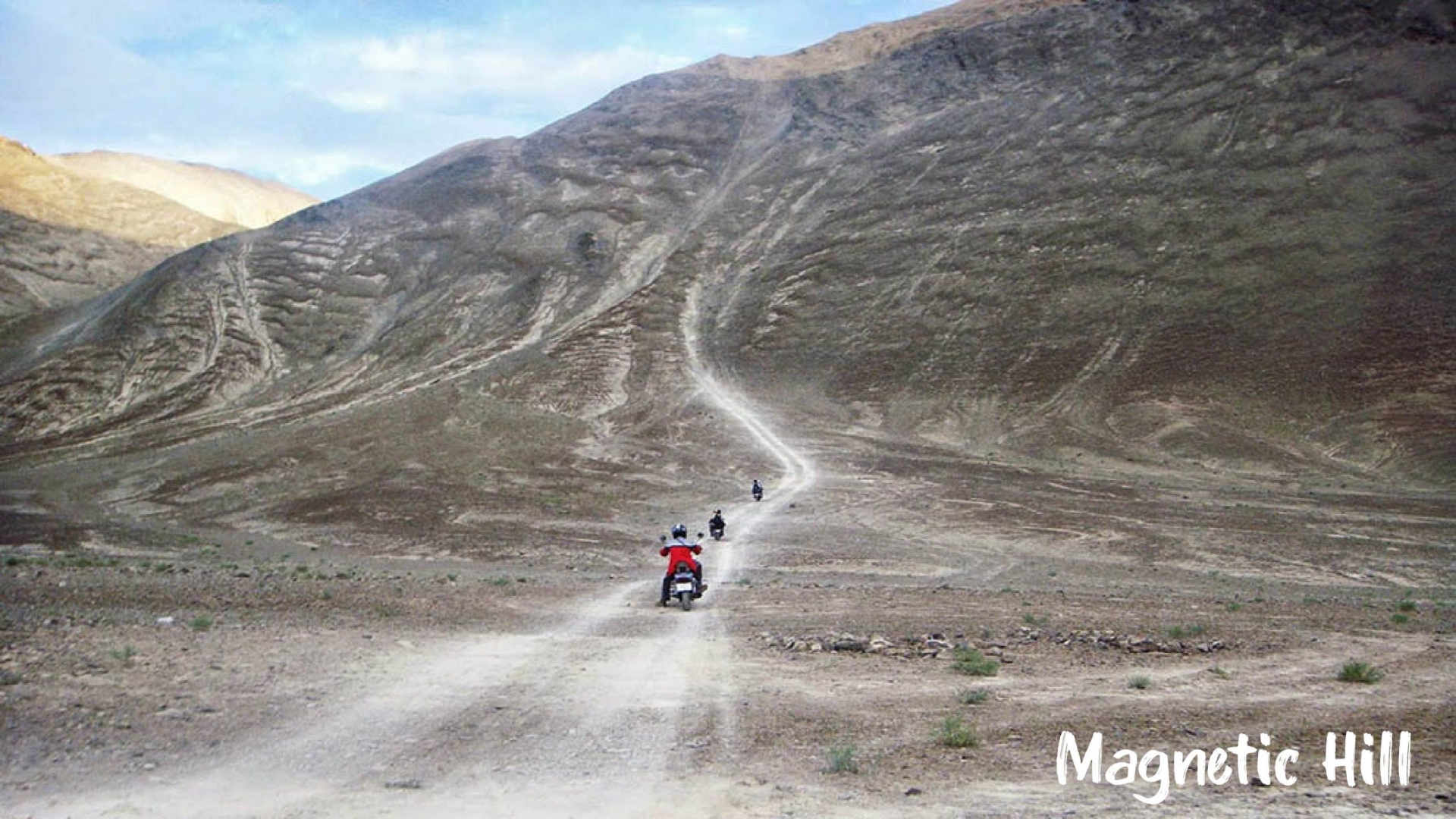 |
| Photo: trahot |
One of the most popular destinations for bikers is Ladakh, where The Magnetic Hill is situated 11000 feet above sea level. Don't skip a trip to one of India's most unusual locations if you are considering visiting Leh-Ladakh. It is thought that the hill has an anti-gravitational pull that will nudge your car in its direction even if the engine is turned off. As a result, it is recommended that you park your car in neutral on the spot indicated by the white line. Now, as you observe and are astounded by this peculiar attraction, your car will begin to move upwards on its own due to gravitational pull.
Even with the engine off, a car can be pulled uphill by the Magnetic Hill in Ladakh, which seems to possess magical abilities. Spoiler alert: Nothing paranormal is occurring in this situation. The road is actually going downhill, despite the fact that it appears to be going uphill. A simple optical illusion, but one of India's most bizarre experiences.
7. Zanskar Valley, Ladakh, Jammu and Kashmir
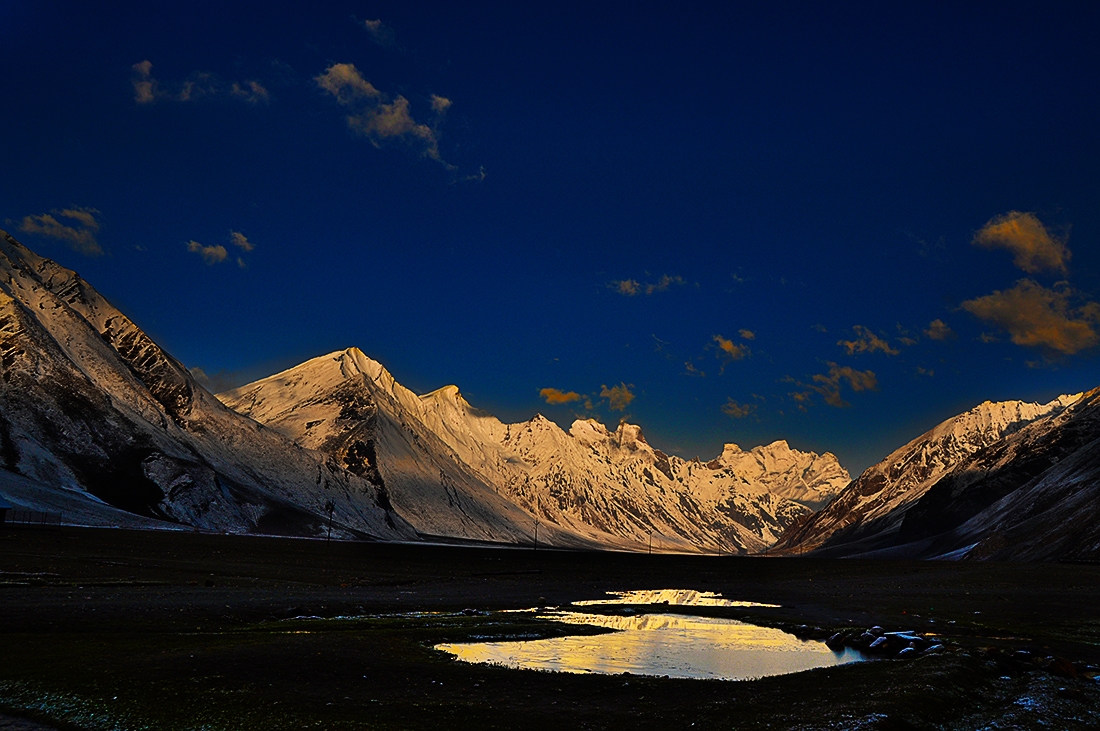 |
| Photo: wikipedia |
The Zanskar valley is the ideal location for you if you're a traveler seeking a sense of seclusion and natural beauty. This stunning valley can be found in the Kargil region of Ladakh. At a height of 13154 above sea level, the Zanskar valley is encircled by snow-capped Himalayan peaks. Additionally, it is the farthest from any trans-Himalayan valleys.
One of the most incredible treks in the Himalayan range is undoubtedly the Zanskar trek. The most thrilling aspect of a trek to the Zanskar valley is the constantly changing scenery. Even though the route is so remote, you will pass by incredible places.
The meeting of the Zanskar River and the Indus River is another captivating sight you can see while traveling to the Zanskar Valley. The clean blue waters of the Zanskar River and the soiled green waters of the Indus River mix at the point of convergence. The Zanskar valley is best visited in the summer. The Zanskar river completely freezes over in the winter, and the access routes to this valley are also covered in snow at this time.
8. Nubra Valley, Ladakh, Jammu and Kashmir
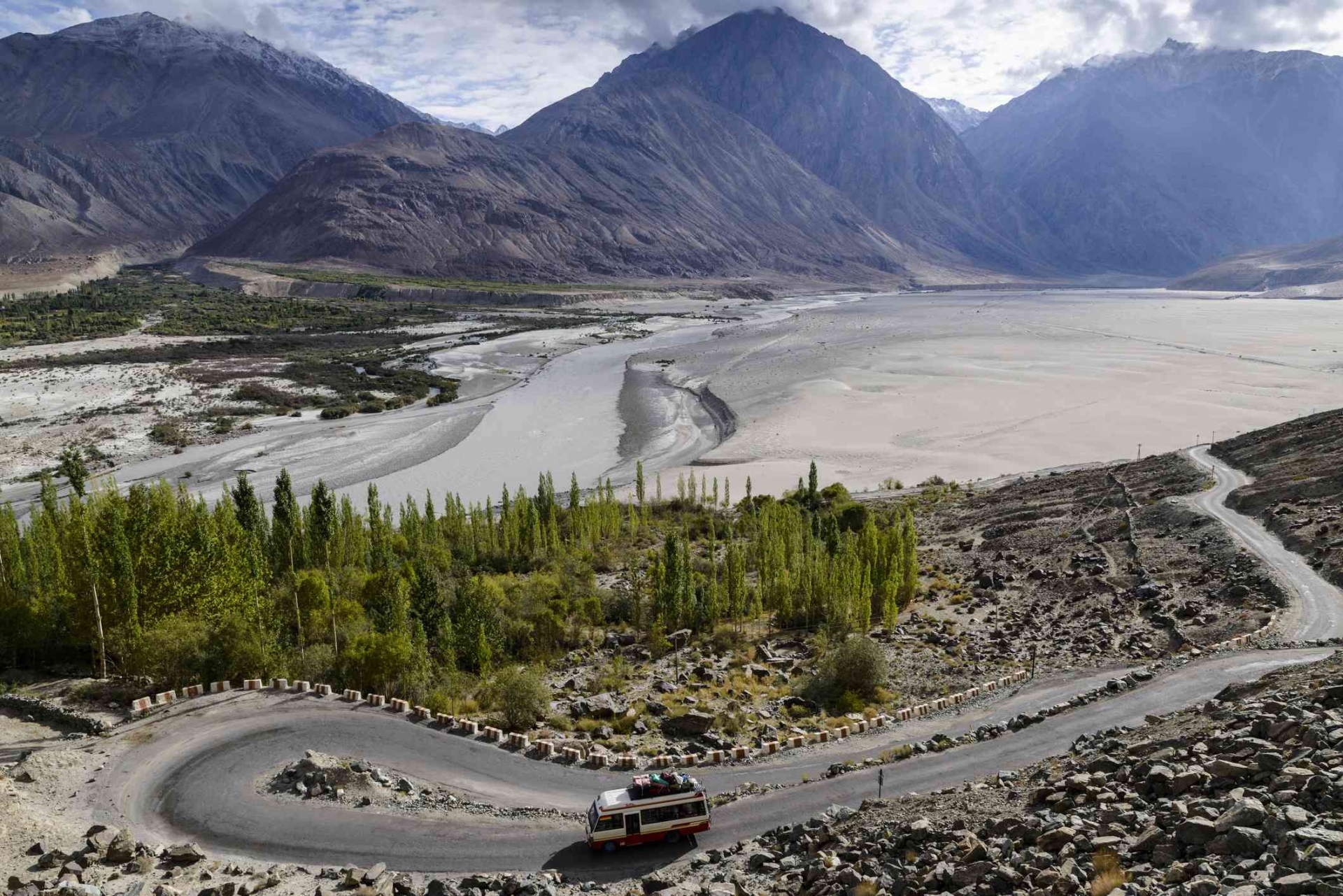 |
| Photo: japjitravel |
The Nubra valley, which is sandwiched between Tibet and Kashmir and encircled by snow-capped Himalayan peaks, is nothing less than paradise. The elevation of this lovely valley is 10,000 feet above sea level. To the north of Nubra valley is the renowned Siachen glacier. It is outside of the polar regions' longest glacier.
You must pass through the Khardung La Pass to get to the Nubra valley. It is the highest motorable road in the world at 5602 meters in elevation. On the way to Nubra Valley, there are countless attractions. You can take in the view of the sand dunes, mountain river, and unusual landscape, as well as the steep mountain sides. This breathtaking valley is where the Siachen River and the well-known Shyok River converge. As a result, the Nubra valley is a truly blessed location.
9. Pangong Tso Lake, Ladakh, Jammu and Kashmir
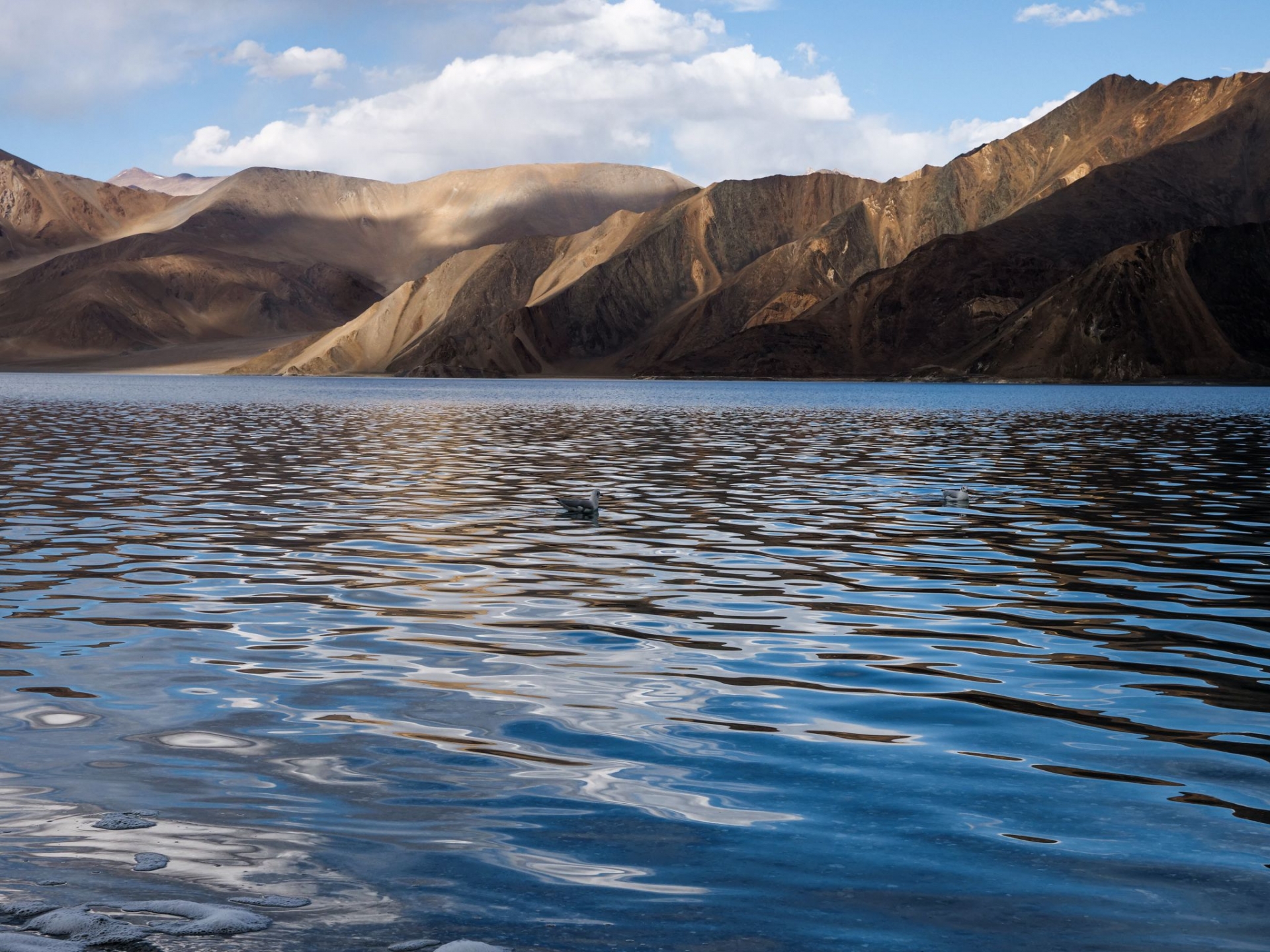 |
| Photo: tripsavvy |
Undoubtedly Pangong lake is the most amazing attraction of Ladakh. This insanely beautiful lake is located 160 km Southeast of Leh city. At an altitude of 4530, Pangong is one of the high altitude lakes in the Himalayan regions of India. This amazing 134 km long lake is extends from India to Tibet. The 60 percentage of the Pangong lake is lies within Tibetan range and remaining 40% lies within the Indian range.
This surreal looking lake is globally renowned for its bright blue waters and the scenic surroundings. Surprisingly, the water of the Pangong lake also displays different shades of blue, green and red at different period of time.
There is no fish or other aquatic life in Pangong lake due to the saltiness of its water. However the lakes receive numerous migratory birds in summer season. Despite of its saline water, the Pangong lake freezes completely in winter. May to September is the best time to visit the Pangong Lake.
Apart from its great natural beauty, Pangong lake is also a calm, pollution free place. The route to Pangong Tso is as beautiful as the lake. You have to pass the Chang La mountain pass of Ladakh. It is third highest motorable road in the world at at an altitude of 17352 feet above sea level. On the way you can see scenic landscape and majestic mountains.
Read More: Top 10 Highest Mountains in India
10. Karni Mata Mandir, Rajasthan
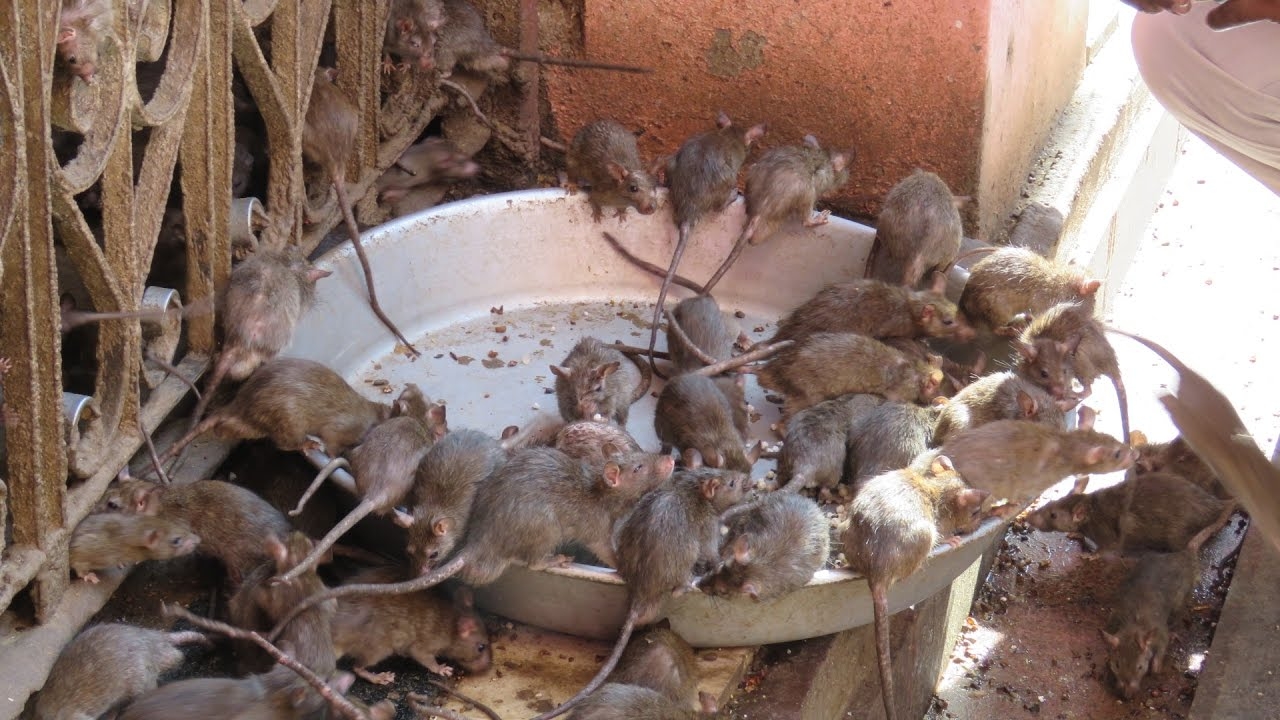 |
| Photo: Youtube |
The Karni Mata Temple, also known as the Rat Temple, is situated in Deshnok, Rajasthan, about 30 kilometers from Bikaner. Its premises may house as many as 20,000 rats. The rats in this area are revered and are thought to be the youngest son of Karni Mata who perished in the water. To bring him back to life, she prayed to Yama, the God of Death. Yama was unable to do this, so he granted her the wish that every member of her family would die and then be reborn as rats.
Approximately 20000 soldiers are said to have fled a battle out of fear and sought refuge in Deshnoke; when Karni Mata learned of this, she spared their lives but transformed them into rats. It is lucky if a rat steps on your toes in this location. The place is completely plague-free despite the fact that there are a lot of rats here. And if you happen to kill a rat here, you are required to replace it with a fresh one that is the same weight in either gold or silver.
Best Tips for Traveling to IndiaTry not to cover too much ground. One of the most important tips I can give you for traveling in India is to limit your itinerary to a few stops and spend more time in each one, rather than trying to see everything in one trip. Walking around in a busy Indian city can be a sensory overload at times, so make time in your itinerary for resting and recovering. You will experience burnout and fatigue if you try to do too much in too little time. Instead, take your time and go deeper into fewer destinations; you'll have a more enjoyable trip. You'll also have more opportunities to interact with locals and have interesting experiences. Be Prepared for Culture Shock When you first arrive in India, you will almost certainly experience cultural shock. It is pointless to try to fight it. Instead, brace yourself and accept that things will not be the same as they were at home. Try to keep an open mind and leave your expectations at the door. Bring Travel Diarrhea Tablets with you. Unfortunately, one of the most common problems that many visitors to India face is the dreaded "Delhi Belly." No matter how cautious you are, your body will not be accustomed to the variety of bacteria found in Indian water and food. This is why having traveler's diarrhea medication on hand is a good idea - before you need it. You will not want to be far from a toilet and searching the streets for a pharmacy if you wait until you are already feeling ill. Loperamide is a good medication to take because it slows down the movement of your gut, reducing your symptoms. If you have stomach pain for more than three or four days, consult a doctor as you may require antibiotics. Venture Outside of the Cities Although visiting India's major cities such as Delhi and Mumbai can be exciting, it is also worthwhile to venture outside of the cities and visit some of the country's smaller villages. The pace of life will be slower, the air will be cleaner, and you will gain a new perspective on Indian culture. Cover up and dress conservatively. Although the weather in India is pleasant, wearing a mini skirt or a low-cut top is not appropriate. It is a conservative destination, and revealing clothing will draw a lot of unwanted attention to yourself. It is also impolite to dress in this manner when visiting a religious site, such as a temple. Bring lightweight long pants, shoulder-covering shirts, and a shawl or sarong to cover your cleavage. Before entering a temple, remove your shoes. Many temples will require you to remove your shoes before entering. As a result, it is best to wear shoes that are easy to slip on and off, such as sandals. If you are concerned about your shoes being stolen from the front of the temple while you are inside, keep them in your backpack or pay a few rupees to the temple attendant to keep an eye on them. |
 20 Least Popular Countries That You Don't Want to Visit in the World 20 Least Popular Countries That You Don't Want to Visit in the World Read the list of 20 least popular countries and find out what are the most isolated and least visited countries in the world. |
 Top 20 Least Popular Places That You Don't Want to Visit in The World Top 20 Least Popular Places That You Don't Want to Visit in The World Let's discover the 20 least visited destinations in the world that should be on every seasoned globetrotter's bucket list! |























